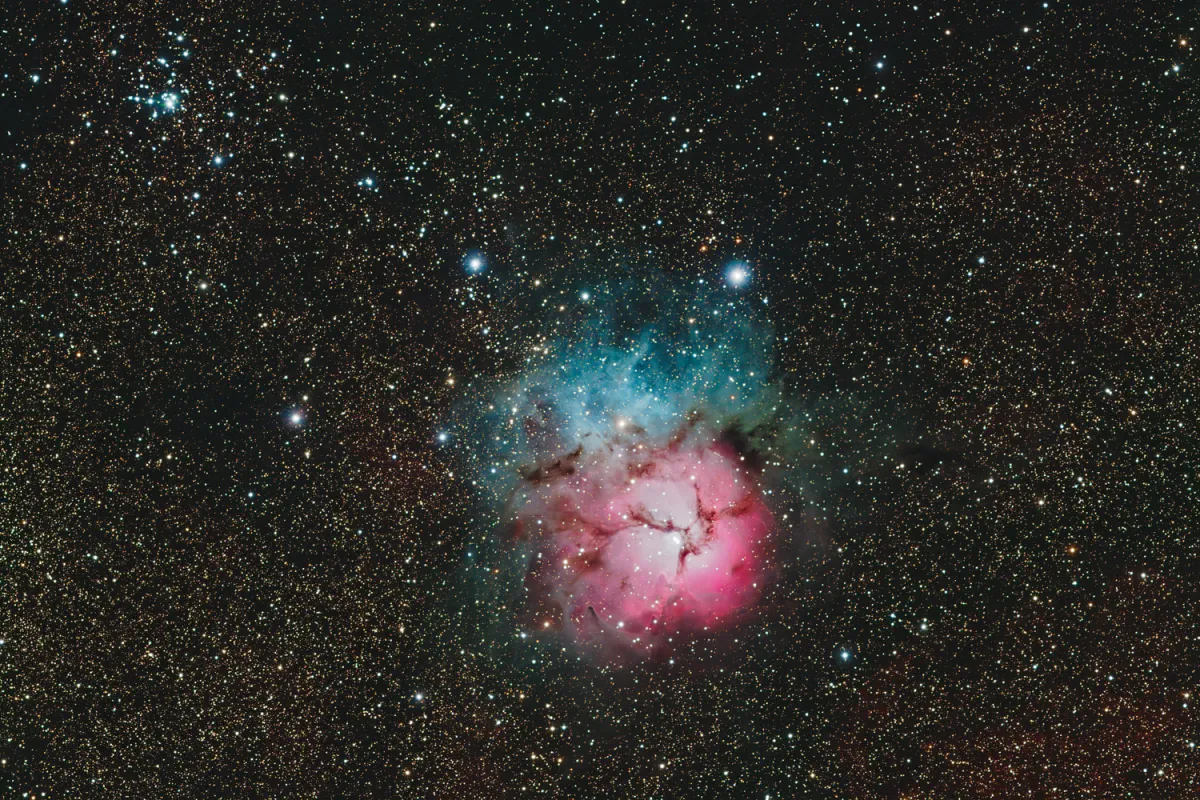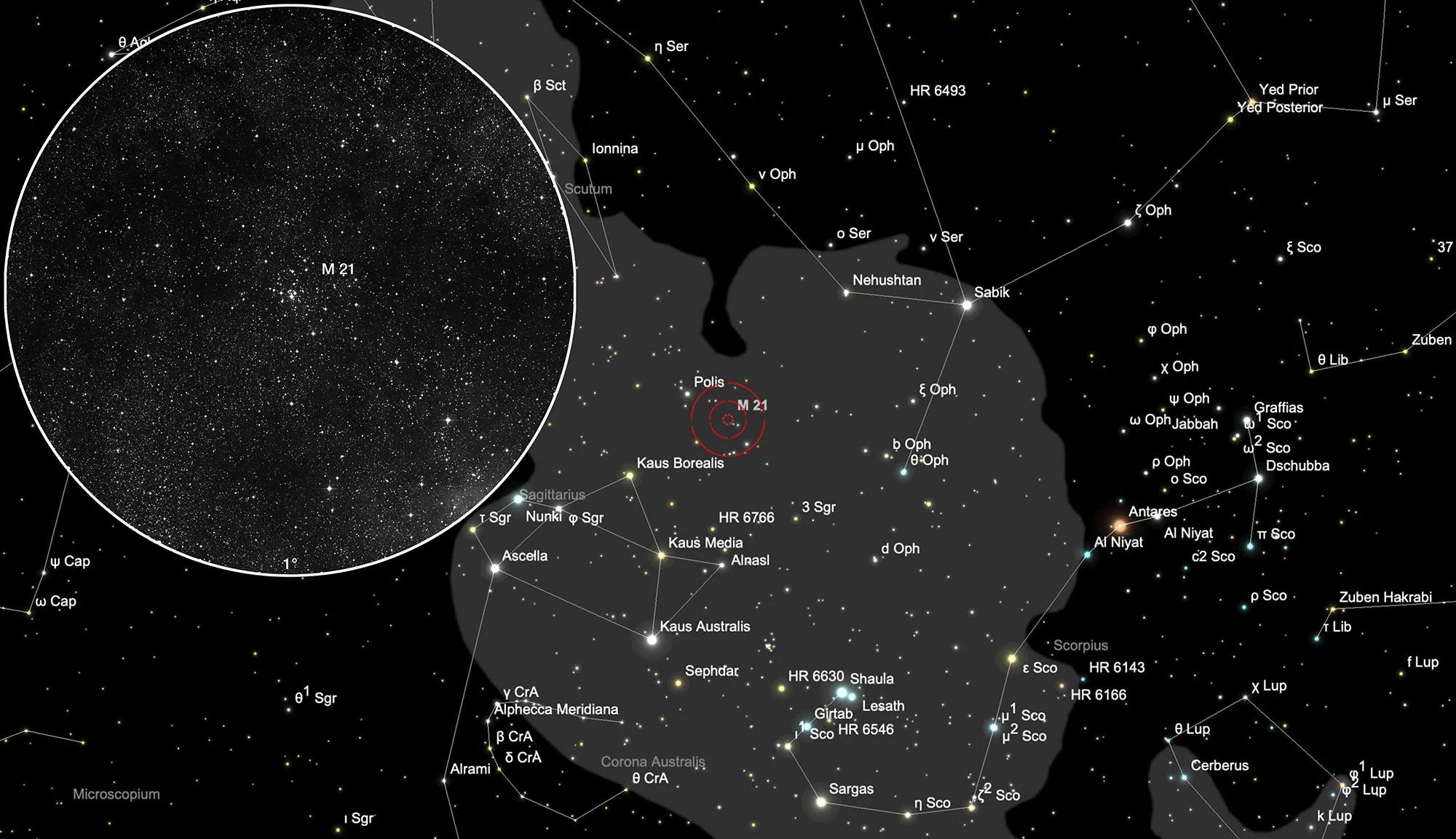Open Cluster Messier 21

Object Description
The galactic star cluster Messier 21 is located about 0.7° northeast of the Trifid Nebula and is one of the discoveries made by Charles Messier in June 1764. Messier identified the star cluster as 11 Sagittari, which is a bit confusing as this star is about 2° to the southeast. Messier also believed he saw signs of nebula in the cluster, although there is no nebula there that can be seen with small telescopes.
M 21 is a less compact group with about six brighter stars in the centre, surrounded by several dozen scattered, weaker stars. The brightest stars are of type B0. The distance is estimated to be about 2200 light years, making M 21 much closer than the Trifid Nebula. The diameter of the cluster is about 17 light years. In the centre there are around nine stars per cubic parsec. [4]
| Designation | NGC 6531 |
| Type | OCL (I3m) |
| Right Ascension (J2000.0) | 18h 04m 13.3s |
| Declination (J2000.0) | -22° 30' 00" |
| Diameter | 16 arcmin |
| Visual magnitude | 5.9 mag |
| Metric Distance | 1.205 kpc |
| Dreyer Description | Cl, pRi, lC, st 9…12 |
| Identification, Remarks | h 1993; GC 4367; M 21; OCL 26; ESO 521-SC19 |
Finder Chart
If one extends the line φ - λ Sagittarii and positions the middle (2°) Telrad circle on it so that it is close to the star μ Sagittarii, the open star cluster M 21 should already be found in a large field eyepiece. The Trifid Nebula (M 20) lies about 0.7 ° to the southwest. Part of it can be seen in the 1° closeup on the location map. Both are best seen in the months of February to November.
